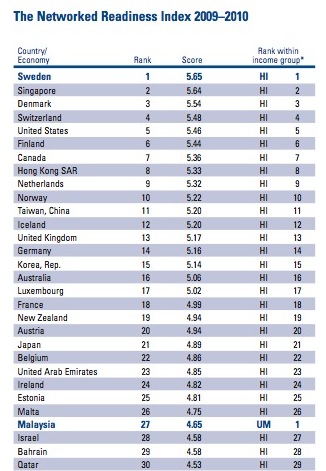By Dr. Janice Presser, CEO, The Gabriel Institute
 Ask any entrepreneur what it costs to make a hiring mistake and you'll likely be met with a groan and a 'double eye roll'. Everyone knows the costs:
Ask any entrepreneur what it costs to make a hiring mistake and you'll likely be met with a groan and a 'double eye roll'. Everyone knows the costs:
- The recruiting fees
- The job postings
- The time you spend interviewing
- Your turnover rate causing increased UC contribution costs
- The lawyer's fees for the employment contract, figuring out how to break the contract, and sometimes additional fees--plus the tax on your time and patience--required to defend yourself against wrongful termination!
Think of these these costs as 'direct damage': a real strain on any entrepreneur's budget, but not an unexpected cost of doing business. Bad hires happen. But wait.....have you considered the 'collateral damage'?
No hiring decision happens in a vacuum. You need your team to be whole. You have a missing part. You seek to fill it in a way that capitalizes on the assets of your existing team members - and makes up for their deficits. That's why prudent employers engage search specialists, scour resumes, do 360-degree interviews, personality tests, reference checks, and even credit checks (where allowed by law). But somehow, bad hires still happen, and when they happen to you, you're naturally disappointed. Or worse. Because if you've pegged your hopes and plans on the wrong person, it's the collateral damage that costs so much more than the hiring failure.

 I have a few different friends who are trying their hands at entrepreneurship; some have met with investors already, while others are closing in on their meeting date with anticipation and uncertainty. Based on hearing some of the things they were doing to prepare for their meeting, I thought it would be wise to roundup some of the best pitch advice I've come across not only for them but for the other first time entrepreneurs out there who may not know what typical VC pitches are like.
I have a few different friends who are trying their hands at entrepreneurship; some have met with investors already, while others are closing in on their meeting date with anticipation and uncertainty. Based on hearing some of the things they were doing to prepare for their meeting, I thought it would be wise to roundup some of the best pitch advice I've come across not only for them but for the other first time entrepreneurs out there who may not know what typical VC pitches are like. The World Economic Forum (the folks behind the yearly Davos meeting)
surveyed 133 nations recently to work out how well each is
The World Economic Forum (the folks behind the yearly Davos meeting)
surveyed 133 nations recently to work out how well each is  "Chairwoman Velazquez, Ranking Member Graves, and all of the members of the Committee, thank you for holding this hearing on business incubators and their role in job creation. I am pleased to discuss how angel investors support innovative start-up companies, some of which work with business incubators and accelerators.
"Chairwoman Velazquez, Ranking Member Graves, and all of the members of the Committee, thank you for holding this hearing on business incubators and their role in job creation. I am pleased to discuss how angel investors support innovative start-up companies, some of which work with business incubators and accelerators. I have spent the majority of my adult life investing my own and other people's money in entrepreneurs. That's why I know the U.S. has a serious problem on its hands.
I have spent the majority of my adult life investing my own and other people's money in entrepreneurs. That's why I know the U.S. has a serious problem on its hands.
 File this under both
File this under both 
 Public-health problems and environmental degradation caused by recycling of old computer equipment could skyrocket in the next two decades, as increasingly wealthy consumers in countries such as India and China ditch their obsolete hardware.
Public-health problems and environmental degradation caused by recycling of old computer equipment could skyrocket in the next two decades, as increasingly wealthy consumers in countries such as India and China ditch their obsolete hardware. An eight-year-old girl lies in an operating room in Children's Hospital Boston, propped up on one side, ready for surgery. She had been complaining of pains in her side, and a scan revealed a blockage in her left kidney.
An eight-year-old girl lies in an operating room in Children's Hospital Boston, propped up on one side, ready for surgery. She had been complaining of pains in her side, and a scan revealed a blockage in her left kidney.
 Thirty years ago the "Japan Inc." partnership between government and industry created an economic powerhouse. Today, those same players are actively blocking innovators in Japan from creating similar success in the fast-growing, new digital economy.
Thirty years ago the "Japan Inc." partnership between government and industry created an economic powerhouse. Today, those same players are actively blocking innovators in Japan from creating similar success in the fast-growing, new digital economy. A surprising number of Silicon Valley investors and bankers gathered in
the bucolic confines of the Four Seasons Hotel off of Highway 101 in
Palo Alto, California to attend the
A surprising number of Silicon Valley investors and bankers gathered in
the bucolic confines of the Four Seasons Hotel off of Highway 101 in
Palo Alto, California to attend the  Metrics strategy is a vital topic relative to innovation. Depsite how
important metrics strategy is, it's a challenging one for many
businesses when it comes to innovation. Going back through my own
experiences and secondary research on innovation metrics, here are a few
starting thoughts on developing your metrics strategy:
Metrics strategy is a vital topic relative to innovation. Depsite how
important metrics strategy is, it's a challenging one for many
businesses when it comes to innovation. Going back through my own
experiences and secondary research on innovation metrics, here are a few
starting thoughts on developing your metrics strategy:
 The Obama administration put together this awesome motion graphics piece to visualize how the Recovery act is actually helping the economy (embedded below). Regardless of whether or not its working or not, this piece does a great job of getting the stats across, and it looks sick.
The Obama administration put together this awesome motion graphics piece to visualize how the Recovery act is actually helping the economy (embedded below). Regardless of whether or not its working or not, this piece does a great job of getting the stats across, and it looks sick. Too tipsy or tired to drive yourself home? GM's Electric Networked Vehicle (EN-V) can help. The concept vehicle
platform, an extension of the Personal Urban Mobility and Accessibility (
Too tipsy or tired to drive yourself home? GM's Electric Networked Vehicle (EN-V) can help. The concept vehicle
platform, an extension of the Personal Urban Mobility and Accessibility (